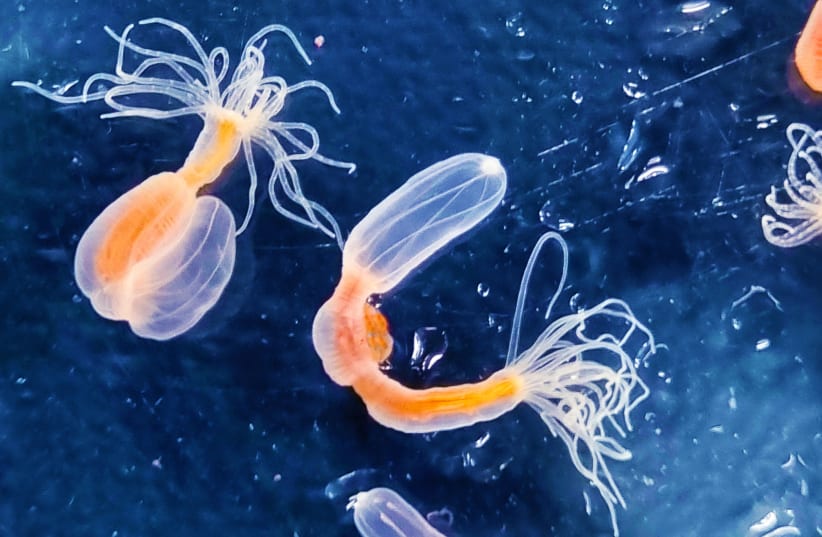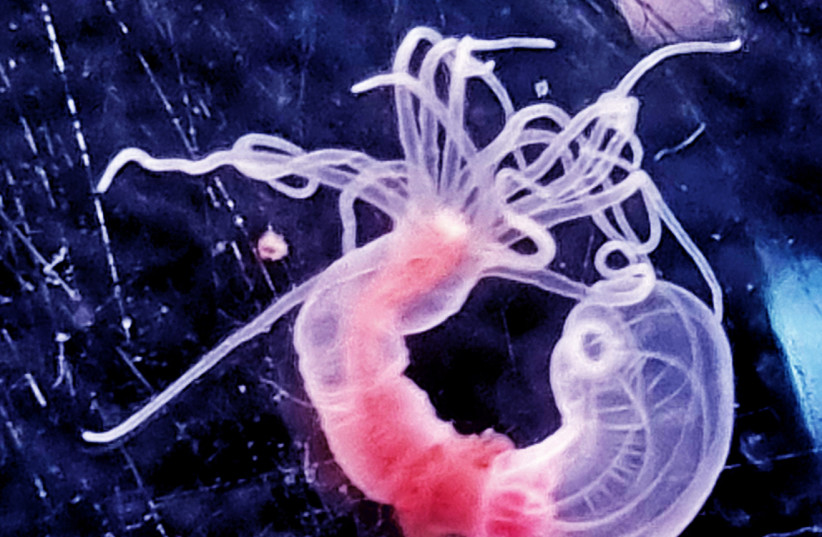What decides whether an animal will prey on others or be eaten? One would naturally think that the larger, stronger creatures are feasted on by the smaller, weaker ones.
But there are other factors – such as neurotoxin – that decide which will be the victors and who will be vanquished. Now, a study by the Hebrew University of Jerusalem (HU) reveals insights into predator-prey dynamics in the animal kingdom.
Prof. Yehu Moran from the HU Faculty of Sciences headed the team that focused on sea anemones – a group of marine with a colorful, flower-like appearance and cousins to corals, jellyfish, and hydra.
Many sea anemones are single polyps with an oral disc with a central mouth and a ring of tentacles that attach themselves to a hard surface by its base, but some species live in sediment and others float near the surface of the water.
They breed by releasing eggs and sperm through the mouth into the water. It also releases a mix of toxins including some that paralyze the prey so the anemone can digest it in its mouth.
Anemones without neurotoxins have reduced defensive capabilities
The team dove into the complex world of predator-prey interactions in the animal kingdom, with a focus on the starlet sea anemone called Nematostella vectensis The team discovered a surprise – a native anemone population lacking the Nv1 neurotoxin; this led to an investigation into its impact on its defending itself against the native predator called a grass shrimp. The results revealed that anemones without the neurotoxin exhibit a noticeable reduction in defensive capabilities.
Anemones without Nv1 showed weakened defensive abilities, while when present, the neurotoxin attracted mummichog fish, which are natural predators of the grass shrimp. “This research enhances our understanding of marine ecosystems and the intricate balance of predator-prey interactions and tradeoffs,” Moran explained.
“Our research introduces an innovative genetic manipulation tool capable of significantly reducing both RNA and protein levels of Nv1, a major neurotoxin in these marine organisms.”
Without the neurotoxin, the grass shrimp attracted mummichog fish (Fundulus heteroclitus), a small creature found along the Atlantic coast of North America. Also known as Atlantic killifish, mummies, gudgeons, and mud minnows, these fish inhabit brackish and coastal waters including estuaries and salt marshes. The species is noted for its hardiness and ability to tolerate highly variable salinity, temperature fluctuations from 6°C to 35°C, very low oxygen levels), and heavily polluted ecosystems. As a result, the mummichog is a popular research subject in embryological, physiological, and toxicological studies. It is also the first fish ever sent to space, aboard Skylab in 1973.
The significance of the study, which was just published in the journal Science Advances under the title “Venom tradeoff shapes interspecific interactions, physiology, and reproduction lies not only in advancing our understanding of predator-prey relationships but also in uncovering a captivating evolutionary tradeoff,” said Moran.
“The reduction of Nv1 levels in the anemones not only impacts their defensive abilities but also leads to faster growth and increased rates of sexual and asexual reproduction. The research introduces a pioneering genetic manipulation tool that allows researchers to explore the direct and indirect effects of toxin genotypes on predator-prey dynamics and have broader implications for marine ecology, potentially promoting conservation efforts and contributing to a more nuanced understanding of the delicate balance within ecosystems.”

